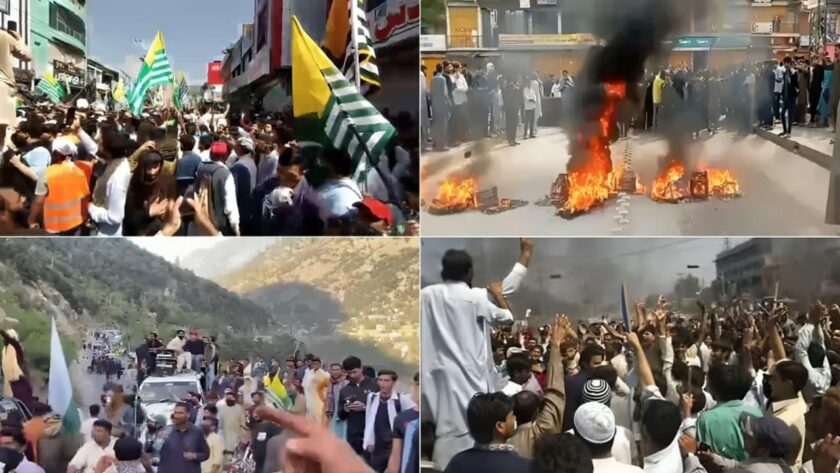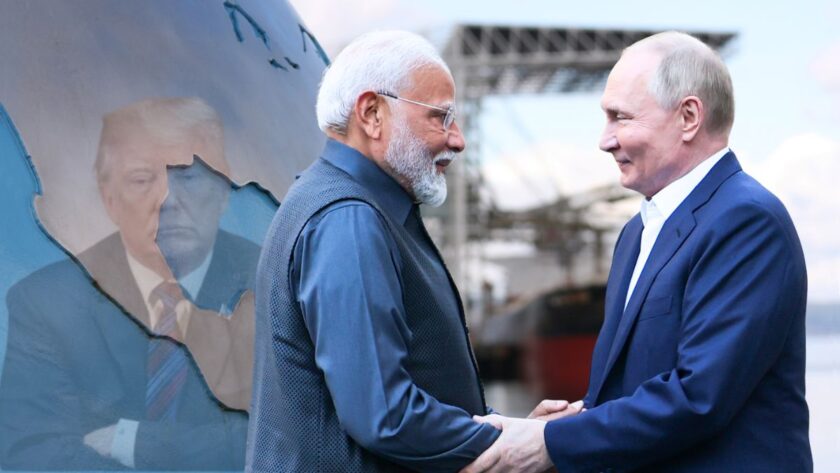New Delhi — “We are proud of our Constitution… look at our neighbouring countries and what is happening there.”
This powerful remark by Chief Justice of India (CJI) B. R. Gavai during a recent Constitutional Bench hearing was more than a courtroom observation — it was a profound reflection on the state of democracy in South Asia and a subtle warning for the future.
Drawing comparisons with Nepal and Bangladesh, CJI Gavai underscored that when constitutional institutions weaken and public trust in governance erodes, democracy risks devolving into mob rule. He emphasized that India’s Constitution remains the strongest safeguard against such collapse — a living document that has repeatedly guided the nation out of crises while fortifying the democratic foundation.
Nepal’s Eroding Trust in Democracy
In neighbouring Nepal, the past weeks have witnessed widespread unrest that has shaken the Himalayan republic. What began as public outrage over a government-imposed social media ban has evolved into a full-fledged movement led by the youth — Generation Z — demanding not only freedom of expression but also an end to corruption, unemployment, and political instability.
Scenes of violent protests reaching the Parliament building, vandalism inside the Supreme Court premises, and attacks on politicians’ residences have underscored deep discontent. Prime Minister K. P. Sharma Oli and President Ram Chandra Paudel were forced to resign amid mounting chaos, yet curfews and military interventions have failed to quell the agitation.
Nepal’s instability is not new. Since the abolition of monarchy in 2008, the nation has seen 14 governments in just 17 years — none completing a full term. Constant disputes over presidential and prime ministerial powers and judicial interventions to dissolve or reinstate governments have made the system fragile. Even the 2015 Constitution failed to ensure stability. Disillusionment has grown so severe that sections of the population are now demanding a return to monarchy — a stark commentary on the disintegration of trust in democratic governance.
Bangladesh’s Political Crisis: A Democracy in Retreat
Bangladesh’s political crisis mirrors a similar erosion of faith in democratic institutions. Recently, Prime Minister Sheikh Hasina was compelled to step down, seeking temporary refuge in India after massive protests engulfed Dhaka.
This was a grim moment for a nation that once emerged from Pakistan’s shadow in 1971 with dreams of democracy and equality. Over the decades, Bangladesh’s democracy has been marred by bitter rivalries between ruling and opposition parties, allegations of election rigging, and the misuse of state machinery. Institutions that were supposed to act as democratic safeguards became partisan. The result — widespread public frustration, violent street protests, and the collapse of civic order.
When public faith in institutions disappears, democracy loses meaning, and mob violence becomes the new form of politics — a dangerous trend that both Nepal and Bangladesh are now grappling with.
India’s Constitutional Resilience
In contrast, India’s democracy stands as a remarkable example of endurance and adaptability. It has faced grave challenges — from the 1975 Emergency to social unrest and corruption scandals — yet each time, the Constitution has guided the nation back to balance.
The 1975 Emergency remains the darkest chapter in India’s democratic history — a time when fundamental rights were suspended, media was censored, and opposition leaders were jailed. Yet, it was the same democratic process that restored justice: in 1977, the electorate ousted Indira Gandhi, proving that the people’s will remains supreme. When the public later felt that the post-Emergency government failed their expectations, they brought Indira back to power in 1980 — a testament to constitutional democracy’s cyclical self-correction.
Judiciary: The Guardian of the Constitution
India’s judiciary has consistently upheld the Constitution’s sanctity. The Supreme Court’s historic judgments — from the 1992 Mandal Commission case ensuring a cap on reservations and the exclusion of the ‘creamy layer,’ to the landmark verdicts following the Babri Masjid demolition — reinforced the principle that no belief, no ideology, stands above the Constitution.

In the 2G spectrum and coal allocation cases, the Supreme Court struck down governmental decisions, reiterating that public resources belong to the people and must not be exploited by those in power. These interventions have preserved the public’s faith in justice and ensured that no leader, however powerful, is beyond the reach of the law.
The Strength of Federalism and Electoral Integrity
India’s federal structure — balancing power between the Centre and the States — has been another pillar of democratic strength. The Election Commission’s independence has ensured that transitions of power remain peaceful and legitimate. Unlike many neighbouring nations, India’s elections are free, fair, and fiercely contested, enabling citizens to hold their leaders accountable every five years.
This constant cycle of electoral accountability prevents authoritarianism and keeps the spirit of democracy alive. No political leader, regardless of influence, can consider themselves irreplaceable.
A Lesson from the Neighbours
The turmoil in Nepal and Bangladesh serves as a stark reminder: institutions are fragile when not nurtured by accountability and public faith. When courts lose independence, when legislatures become partisan, and when governance disconnects from the people, democracy becomes hollow.
CJI Gavai’s statement, therefore, is not merely a matter of pride but also a cautionary note. The moment India’s institutions lose autonomy or political leaders start undermining constitutional principles, the country could find itself walking the same perilous path as its neighbours.
The Living Power of the Indian Constitution
India’s success lies in making its Constitution a living document — not confined to books but reflected in practice. Over 75 years, it has evolved through amendments, judicial interpretations, and people’s participation, remaining relevant in changing times.
Every major challenge — be it the Emergency, caste agitations, religious disputes, or corruption scandals — has tested the limits of the system. Yet each time, India’s Constitution has brought the nation back from the brink, reaffirming faith in democratic processes.
The Final Word
As South Asia grapples with deep political and social fissures, India’s democratic resilience stands as a beacon of hope. CJI Gavai’s words remind the nation that the Constitution is both a shield and a mirror — it protects, but it also reflects who we are as a people.
To safeguard democracy, India must continue to strengthen its institutions, preserve judicial independence, and ensure that the will of the people remains the ultimate force.
Because the true test of a democracy is not how it survives in calm, but how it responds in crisis. And so far, India’s Constitution has ensured that — even in the storm — the world’s largest democracy stands tall.






